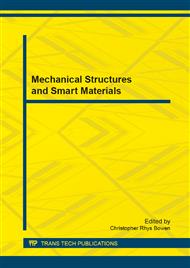p.243
p.247
p.255
p.259
p.263
p.267
p.272
p.276
p.282
Surface Roughness and Wettability Correlation on Etched Platinum Using Reactive Ion Ecthing
Abstract:
As the world of semiconductor is moving towards smaller and high-end applications, the quality of the bonding adhesion for wire bonding is very critical. Although aluminium has been the metallization of choice in integrated circuits, it can be easily oxidized during high temperature and pressure. On the other hand, Platinum metallization layer has high thermal coefficient resistance and inert to oxygen. This paper reports the correlation between surface roughness and the wettability in the form of contact angle for Platinum deposited wafer etched using Inductively Couple Plasma-Reactive Ion Etching (ICP-RIE). Surface roughness was measured using AFM while contact angle was obtained via droplet test. The results clearly suggested that both surface roughness and wettabily, calculated by its contact angle value has the same trend. Surface roughness is directly proportional to the contact angle. This indicates that surface roughness have great influence on the surface wettability. Therefore, the adhesion for wire bonding process on platinum metallization which can be used in high end applications can be controlled by its surface roughness and wettability.
Info:
Periodical:
Pages:
263-266
Citation:
Online since:
January 2014
Price:
Сopyright:
© 2014 Trans Tech Publications Ltd. All Rights Reserved
Share:
Citation:


